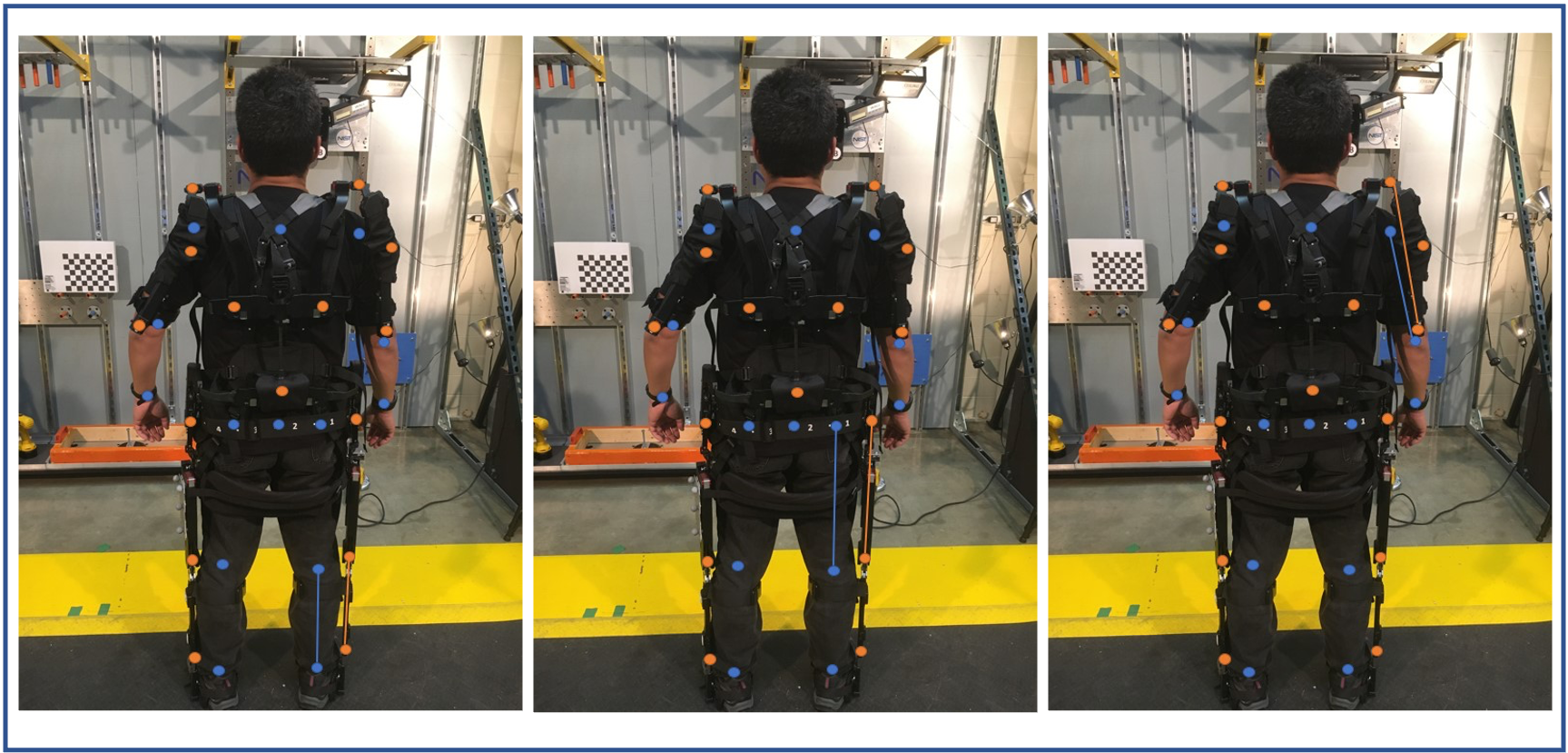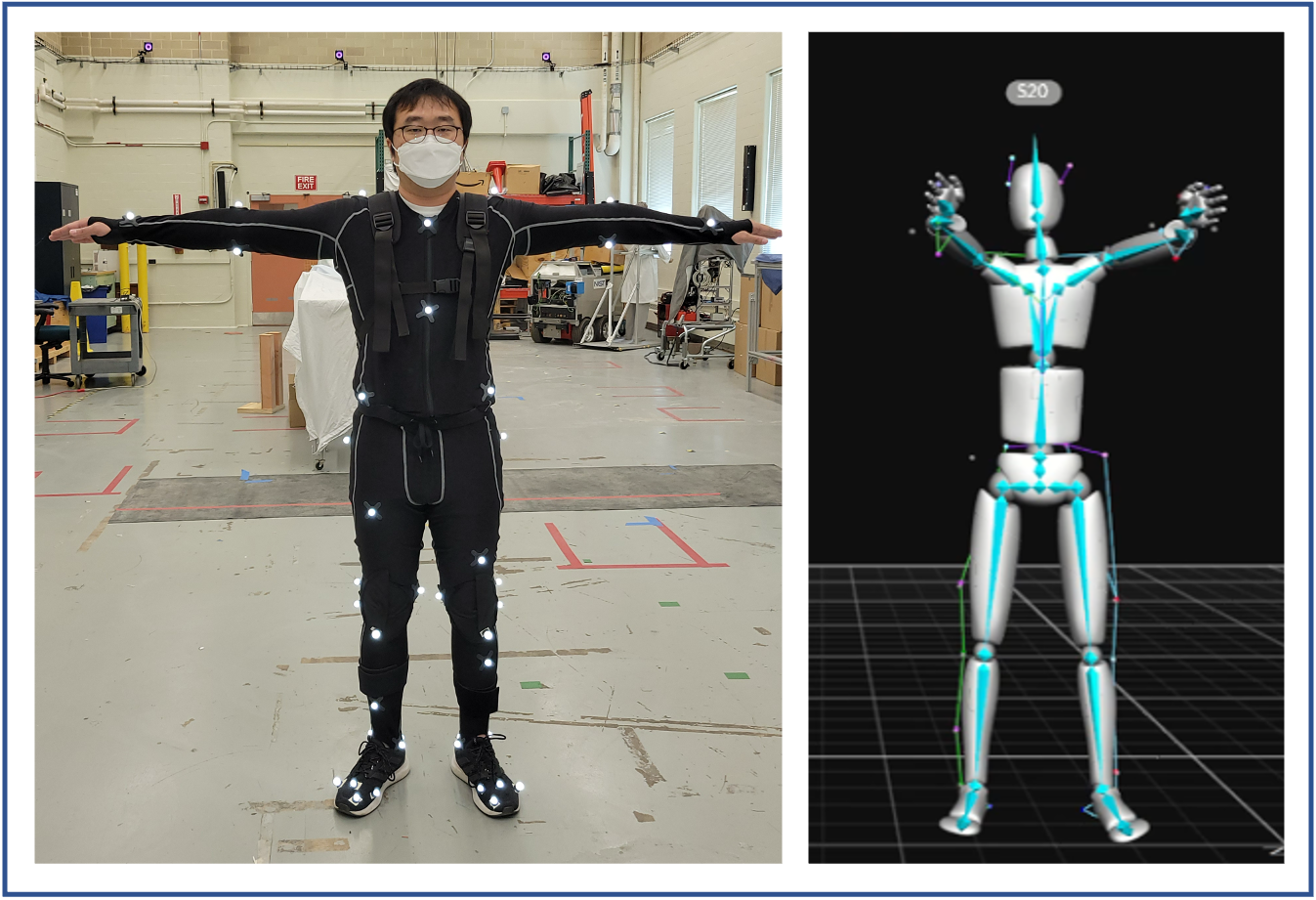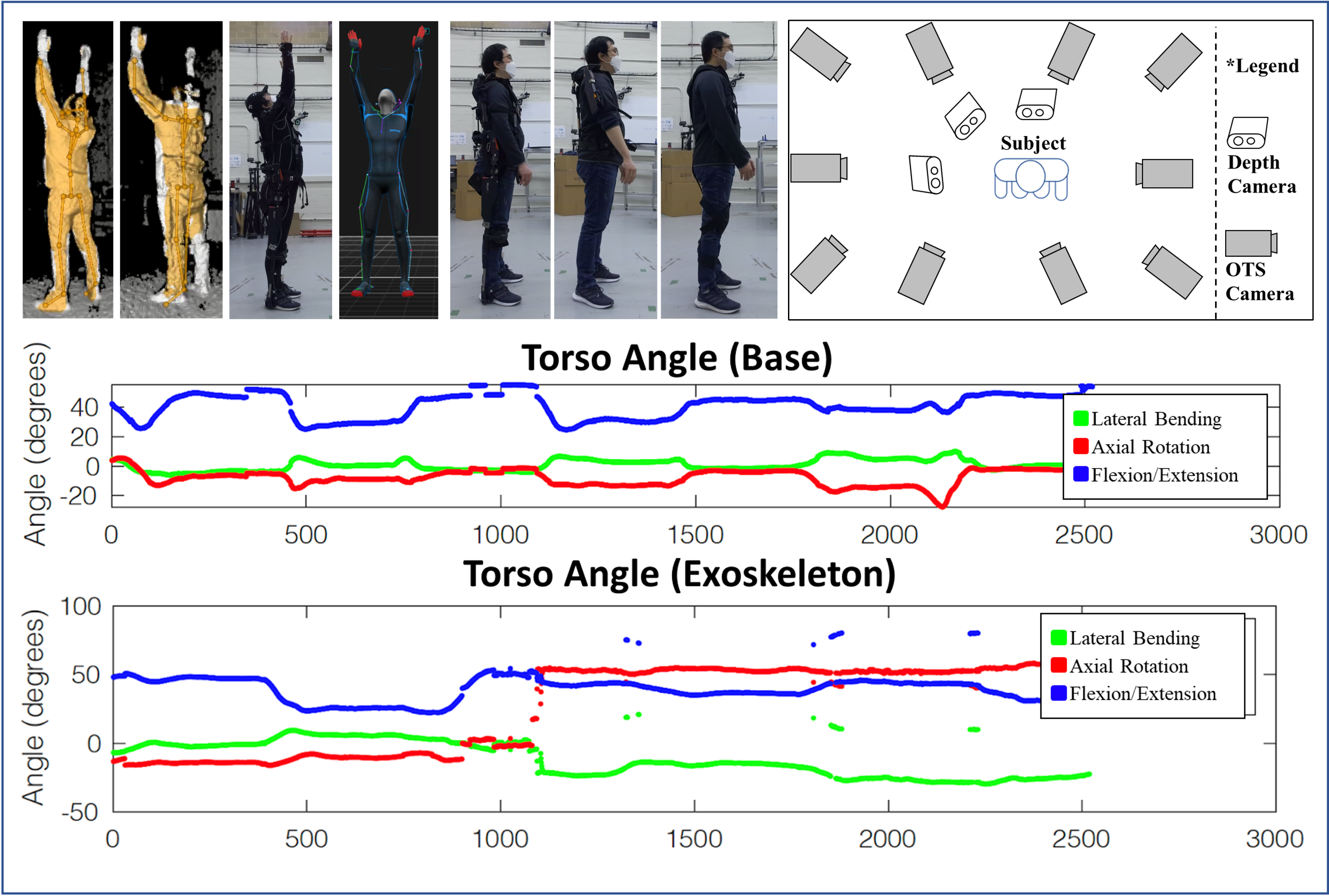Research
Wearable robots are becoming more advanced with closed loop sensory active control. Technology is advancing to enable increasingly adaptable and more accurate control, to prevent worker fatigue and improve longevity. Wearable robots may enable disabled workers to perform additional job functions. Some manufacturing companies are even requiring wearable robots as personal protective equipment. We are developing and integrating metrics, sensors, testbed infrastructure, test methods, and algorithms to evaluate how the exoskeletons impact the users’ mobility, metabolic responses, kinematics, and kinetics to validate performance test methods for active, passive and hybrid wearable robots.
Standard test methods will help exoskeleton manufacturers and end users to understand the capabilities of the system, show design deficiencies and/or the need for improvements, and provide guidance for procurement requirements.
The design and validation of test methods will guide the development of standard test methods thru ASTM F48 standards development for multiple domains (industrial, construction and public safety
Using a tracking system, optical (OTS) or marker-less system (Color depth) to compare joint angles and body posture while wearing the exoskeleton to determine the fit of the exoskeleton to the body. In particular, exoskeleton fit and usability can also impact the safety and effectiveness of exoskeletons in reducing musculoskeletal injuries.




